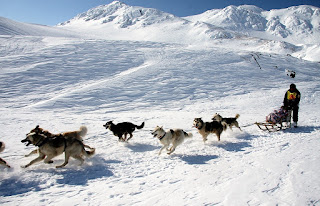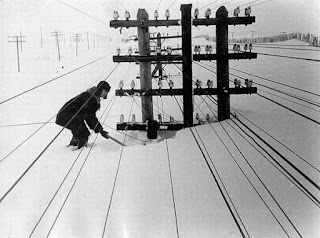Kamchatka has been discovered by people for a long
time. But still remains an attractive and mysterious place for travelers. Most
of them, once visiting Kamchatka, fall in love with an untouched and unusually
picturesque nature and try to return to the peninsula once again.
The Kamchatka Krai is an integral part of the Far
Eastern Federal District of Russia, the easternmost territories of the country,
by nature and climate, quite unlike its central regions. It includes a large
Kamchatka peninsula (464.2 square kilometers), as well as the Commander Islands
and the Karaginsky Island. This is a real land of contrasts.
Only 317,000 people live in such a huge area, so the
population density is low. In addition, almost 80% of all Kamchadals inhabited
three cities - Petropavlovsk-Kamchatsky, Yelizovo and Vilyuchinsk. Long time on
this earth lived Itelmen, Koryak and alutortsy professed shamanism, cult of
spirits and veneration of ancestors. Now in the region there live
representatives of 134 nationalities, 85% of which are Russians. The basis of
the modern economy of Kamchatka is the fishing industry, agriculture,
extraction of minerals and, of course, tourism.
Local climate is usually characterized as a moderate
monsoon. The average temperature in January in Kamchatka is -15.5ºС, and in July + 13.2ºС. Precipitation for the year is about 1000 mm. And in
the north, located on the same latitude as Arkhangelsk, the climate is
subarctic. This part of the peninsula lies in the permafrost zone. And since
Kamchatka is washed by the cold seas - Okhotsk and Bering, and also by the
northern waters of the Pacific Ocean, the ice here lasts 7-8 months a year.
HOW TO GET THERE
The administrative center of the region -
Petropavlovsk-Kamchatsky separates 11,876 km from the capital of Russia. It is
necessary to fly to Petropavlovsk-Kamchatsky by air, there is no other way now.
The international
airport is in Elizovo, 30 km from the main city of Kamchatka. Regular flights
from Moscow, Novosibirsk, Magadan,
Krasnoyarsk, Vladivostok, Khabarovsk and Irkutsk, USA and
China in season, are made here. The cost of the ticket depends on the time of its
purchase and the chosen season for the trip.
WHERE TO STAY
In Petropavlovsk-Kamchatsky, many hotels have been
built, from cheap to very expensive, there are guest houses, mini-hotels and
budget hostels. All of them take travelers all year round.
In neighboring Yelizovo housing is more budget. There
are also hotels, guest houses, a recreation center and a hostel. In the resort
villages of Elizovo district - Paratunka and Termalnoye - you can stay at
recreation centers, in sanatoria and guest houses.
When traveling through protected areas - nature
reserves and national parks - tourists usually stay in tent camps at special
parking lots, as well as in cordon cottages or shelters.
TOURIST OPPORTUNITIES
Kamchatka has a unique tourist potential. Its unusual
and rich natural complexes are included in the UNESCO World Heritage List.
(Kamchatka nature reserves and national parks)
In winter and spring, with a stable snow cover, the
mountain slopes offer excellent opportunities for all kinds of winter sports:
heli-skiing, traditional alpine skiing and snowboarding. In winter time,
snowmobiles and dog sleds are very popular, ice fishing and bathing in hot
springs.
(Kamchatka for active recreation and tourism)
Kamchatkas rivers have long been developed by rafting
enthusiasts. And the coastal waters - fans of diving, sport fishing, kayaking
on the sea and sea cruises. Recently on the peninsula, the popularity of
mountaineering, ecological tourism, bird and animal observations, as well as
volunteer activity to help employees of national parks and reserves has been
growing.
WHAT TO SEE
Volcanoes. Almost all volcanoes of Kamchatka are concentrated in its eastern part. They are part of the Pacific ring of fire. It is difficult to calculate their exact number, since they have different shapes and are often called simply "hills" or "mountains". There are 29 active volcanoes. The World Heritage site "Volcanoes of Kamchatka" is located in the territories of the Kronotsky Reserve and the South Kamchatka Wildlife Refuge. And the volcanoes Avachinskaya and Koryakskaya volcano located not far from Petropavlovsk-Kamchatsky were the most accessible for inspection and visiting.
Geysers and hot springs. The most famous place in Kamchatka was the Valley of Geysers in the Kronotsky Reserve. This unique nature monument can be visited during a sightseeing tour. From Elizovo airport helicopters arrive in 50 minutes directly to the visit-center of the valley. A huge landslide, which occurred in 2007, changed its appearance and formed the Lake of Geysers. But most of the famous hot springs remained above its surface. The Valley of Geysers is impressive.
(10 most popular thermal springs in Kamchatka)
Hot springs are located in different parts of the peninsula. The closest to Petropavlovsk-Kamchatsky are in the Elizovo district. Low-mineral hot springs with a temperature of + 38ºС in large quantities are in Paratunka and Thermal. And radon and hydrogen sulfide sources are located in Razdolnoye. In Nalychevo Nature Park, where you can make pedestrian and helicopter tours, there are many cold narzans and a whole Hot river with thermal springs.
Bears and spawning salmon. Kamchatka is the realm of bears. Here they are several tens of thousands. The tourists are popular helicopter excursion to the Kuril Lake, located on the territory of the South Kuril Wildlife Refuge. It is considered the "most bearish" in Russia. More than 1000 brown bears live on aerial surveys on its shores. For spawning in the lake sails a huge, numbering 2 million individuals, a school of sockeye salmon. And all the bears go ashore for fishing. At this time, to observe them, it is enough just to stay at the houses of the tourist shelter. Impressions will suffice for a long time!
Acquaintance with the culture of small nationalities. In order to learn local rituals and traditions, you can visit the Ethnic Village of Pimcha in the village of Sosnovka or the ethnic camp "Kaynyran" in the valley of the river. Kolokolnikov Elizovsky district. Fans of ethnourism are also encouraged to travel across the entire peninsula to the village of Palana, the center of Koryak culture.
(10 places for ethnographic tourism in Kamchatka)
Petropavlovsk-Kamchatsky. The city, founded in the XVIII century, attracts fans of excursion and scientific and educational tourism. In it there are many monuments related to the names of the great seafarers: Vitus Bering, Jean-Francois La Perouse, Captain Charles Clerc. Also in the city there are museums worthy of attention: the military-historical museum (Radiocommunication Street, 69), the local history (Lenin street, 20), the salmon museum (58 Akademika Koroleva str.), The volcanology museum (9 Piipa boulevard), the memorial complex "Nikolskaya Sopka" and the Regional Art Museum (Leningradskaya str., 100).
(10 things to be done in Petropavlovsk-Kamchatsky)
From Petropavlovsk-Kamchatsky, sea walks and excursions along the Avacha Bay are popular. In the northern part of it, right in the city, there is a rookery of sea lions or sea lions. In the bay there are interesting natural objects - the islands "Grandmother's Stone", "Starichkov" and rocks "Three Brothers", on which live seabird colonies.
SOUVENIRS
Local craftsmen are famous for carving. You can buy for memory carved from Kamchatka alder figures of Voron Kutkh, whom the Itelmen consider the ancestor of Kamchatka and the patron of northern hunters. Or buy a traditional northern souvenir-amulet - a figure of Peliken.
(Souvenirs from Kamchatka)
In addition, the products of carvers on bone and horn - sleds, figures of dogs, deer and local people in national costumes - are very popular. The main material for them - the horns of deer and rams, as well as walrus tusk. Traditional craft for the Itelmen, Koryaks and Evenks - dressing and tailoring of deer fur products. In souvenir shops it is worth paying attention to embroidered with fur and colored fabrics belts, mittens, wallets and headdresses.
SECURITY
The Bears. There are a lot of them in Kamchatka. Especially dangerous these animals can be during the awakening from hibernation - in late April. When driving along the paths and taiga, you need to be careful and try to notice the traces of the presence of bears - the places of their feeding and lying. Watching the bears hunting for fish on the rivers, you need from a safe distance. And the main rule - you can not move away from the group.
Volcanic activity. A great danger to health can be represented by fumaroles fuming with sulfur fumes, hot, key-breaking geysers and thermal springs with a high temperature.
Specificity of the mountainous relief. Traveling through the mountainous part of Kamchatka, you need to be careful when crossing the stormy rivers, moving on wet grassy slopes and on screes. And in February and March, when there is a lot of precipitation, the mountain slopes are avalanche-hazardous.
































































